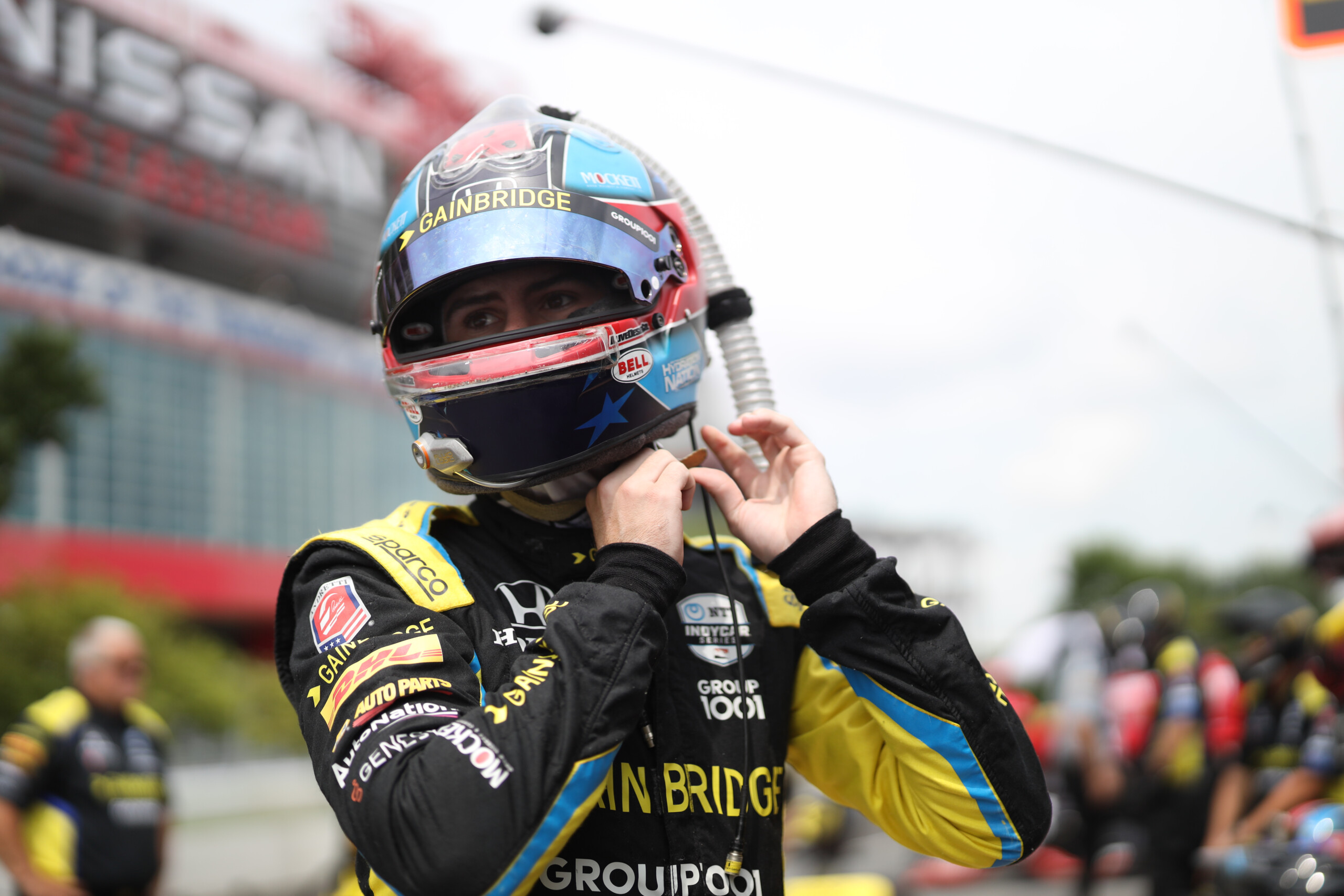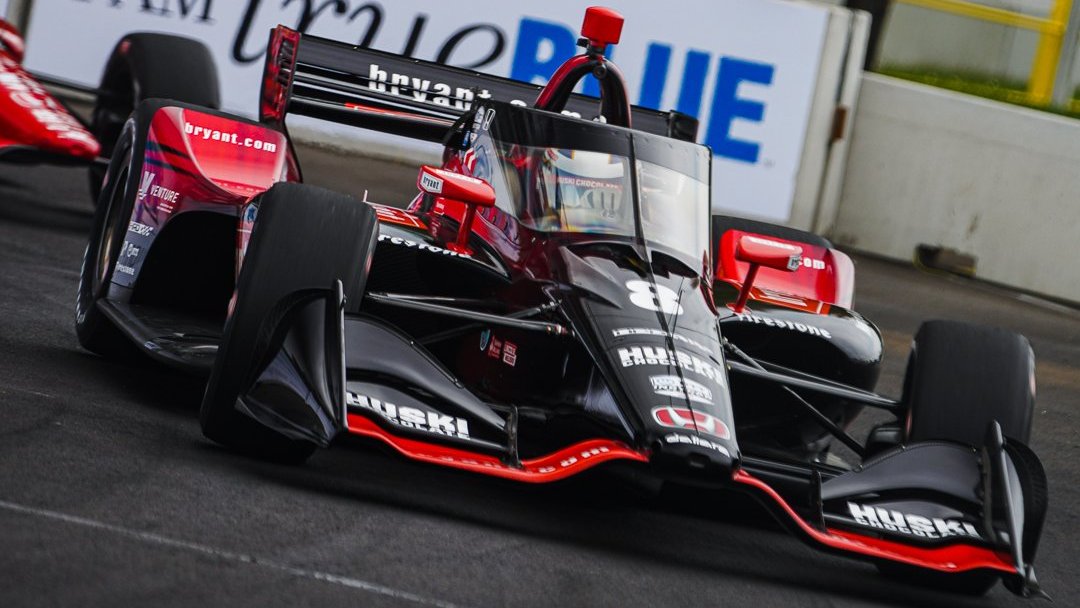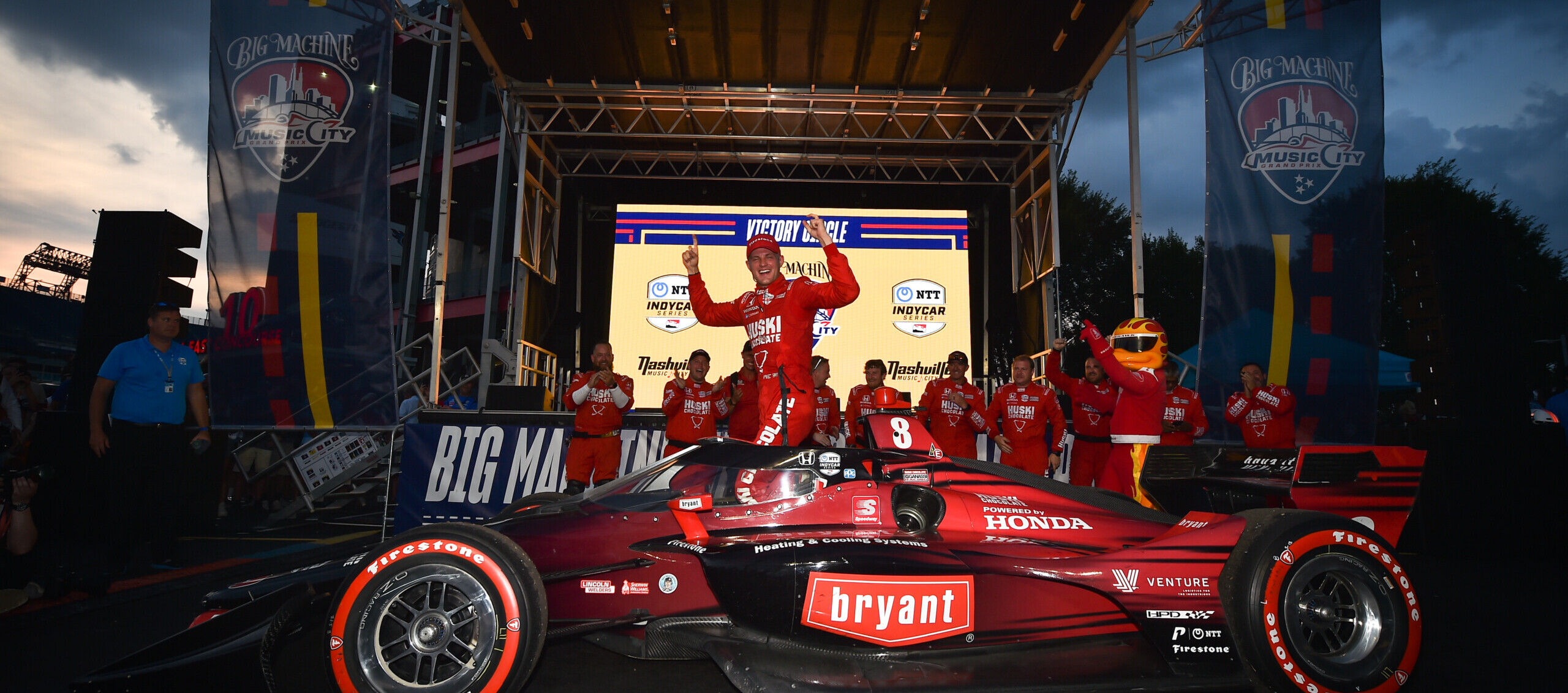Marcus Ericsson crashed early, only to take his second career IndyCar victory in a chaotic Big Machine Music City Grand Prix, bringing himself into championship contention.
But how did he do it?

All weekend long Andretti Autosport’s Colton Herta dominated the rest of the field, leading all practice sessions and claiming an incredible sixth pole position, the second of his season. He would lead the field convincingly from the start ahead of Chip Ganassi’s Scott Dixon and Andretti teammate Alexander Rossi. Or at least, he would have led convincingly had there not been a run of safety car interruptions.
One of the culprits came in the form of eventual race winner Marcus Ericsson who was lucky to escape a collision with Sebastien Bourdais without serious damage. The Swede made a dreadful misjudgment on the restart, collecting into the back of the Frenchman and launching himself into the air.
The TV cameras were able to pick up the underside of Ericsson’s car as he soured through the air so much was the scale of the accident. Luckily, he landed bottom down and continued to the pits (albeit with a broken front wing, which at one point was bending underneath the car and remaining in a *vertical* position)
Following repairs, he was forced to serve a stop-go penalty for his part in the Bourdais incident. However, importantly it was during this time his team made the interesting strategy call to put on the red sidewall tyres. He had already used the primary black sidewall tyres for his first stint, meaning he had fulfilled the need to use both compounds early on. The team still had one more set of red tyres for the rest of the race which offers more grip, with the risk of less life. But when he would have to pit again, it would be early, preempting any late safety cars.
As a result, Ericsson was on an off-set strategy to the rest of the field and able to capitalise through the series on ensuing caution periods.
So much so, on Lap 31, Ericsson emerged in the lead while under caution as the rest of the leaders (including Colton Herta) dove into the pits. Heading back out just as the safety car led the field through Turns One and Two. In fact, it was millimeters that decided the lead of the race as both Ericsson, Hunter-Reay, and Herta crossed the ‘Blur Line’ at almost the exact same time.
Would you believe it? Marcus Ericsson had soured through the air, served a penalty, and had somehow come out in the lead of the Nashville Music City Grand Prix, a place where track position is key.

The Swede would lead until Lap 45 when it was time to stop again which cycled Herta back out to the front. However, the constant flow of safety cars never gave the American a moment to build a gap. On the seventh caution, Herta would eventually pit again, rejoining down in ninth which would eventually become fourth as the pit stop cycles sorted themselves out. With twenty laps to go, he would have to make it past James Hinchcliffe, Ryan Hunter-Reay, Scott Dixon, and Marcus Ericsson for the win.
On the restart he set out to do just that, pulling off some audacious overtakes, the best one arguably on Scott Dixon into Turn Nine after getting a great run off the bridge. With 18 Laps remaining, it was just Ericsson left with neither having to stop again.
With ten to go, Ericsson was under incredible pressure, with his red-wall soft tyres falling away and with a significant amount of fuel-saving to do. However, he held firm, masterfully using his advantage of ‘push-to-pass’ to hold off Herta over the bridge. It almost came up to an abrupt end for both. Herta locking up coming into Turn Nine and almost running into the back of Ericsson.
Unfortunately, the resulting flat spot led to another, more catastrophic lock-up in the same corner, forcing Herta into the wall. Within a blink of a second, his dominant weekend came to an end. Overcome with emotion, the American was left languishing in the medical truck, head deep in his hands, and fought back the tears of what could have been.
Ericsson remains fifth in the championship but is now only four points behind Team Penske’s Josef Newgarden.
Ganassi team-mate Alex Palou, who salvaged seventh in Nashville, leads Dixon by 42 points with Pato O’Ward third for Arrow McLaren SP whose race was ruined after causing a collision with Alexander Rossi.

Leave a Reply